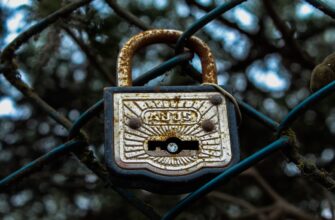- Why Securing Your Ledger Wallet is Non-Negotiable
- Essential Pre-Setup Security Precautions
- Step-by-Step Secure Initialization
- Advanced Protection Protocols
- Daily Operational Safety Measures
- Frequently Asked Questions
- Can someone steal my crypto if they physically steal my Ledger?
- Is it safe to connect Ledger to public computers?
- How often should I check for firmware updates?
- What should I do if I lose my recovery phrase?
- Are Ledger’s Bluetooth connections secure?
Why Securing Your Ledger Wallet is Non-Negotiable
In the world of cryptocurrency, your Ledger hardware wallet is the fortress guarding your digital assets. Unlike exchange wallets vulnerable to hacks, Ledger devices store private keys offline – but only proper security practices make them truly impenetrable. This comprehensive tutorial walks you through securing your Ledger safely against physical theft, phishing scams, and human error. Follow these steps meticulously to ensure your crypto remains under your exclusive control.
Essential Pre-Setup Security Precautions
Before touching your device, establish a secure environment:
- Purchase Directly from Ledger: Avoid third-party sellers to prevent tampered devices.
- Verify Device Authenticity: Use Ledger’s Genuine Check during setup.
- Prepare a Secure Space: Set up in a private room without cameras or observers.
- Disable Internet Connections: Turn off Wi-Fi/Bluetooth until setup completion.
Step-by-Step Secure Initialization
- Initialize as New Device: Never use pre-configured setups. Select “Configure as new device” on startup.
- Generate Your Recovery Phrase: Write down the 24-word phrase ONLY on the provided recovery sheet. Never digitize it – no photos, cloud storage, or text files.
- Verify Phrase Accuracy: Use Ledger’s “Recovery Check” app to confirm you recorded words correctly.
- Set a Strong PIN: Create an 8-digit PIN (avoid birthdays or patterns). Enter it scrambled to thwart shoulder surfers.
- Install Apps via Ledger Live: Only install blockchain apps through the official Ledger Live desktop app.
Advanced Protection Protocols
- Enable Passphrase (25th Word): Add a custom word to your recovery phrase for hidden accounts. Memorize it – never write it with your 24 words.
- Use Multiple Accounts: Segregate assets across different accounts to limit exposure.
- Firmware Updates: Always update via Ledger Live immediately when notified – patches critical vulnerabilities.
- Transaction Verification: Physically confirm ALL transaction details on your Ledger screen before approving.
Daily Operational Safety Measures
Maintain vigilance during routine use:
- Always disconnect Ledger when not in use
- Never enter your recovery phrase anywhere except the device itself
- Bookmark Ledger Live website to avoid phishing sites
- Use a dedicated malware-free computer for crypto transactions
- Store recovery sheet in a fireproof safe or bank vault – not digitally
Frequently Asked Questions
Can someone steal my crypto if they physically steal my Ledger?
No – without your PIN, the device is useless. After 3 incorrect PIN attempts, Ledger wipes itself. Your funds remain accessible via your recovery phrase on a new device.
Is it safe to connect Ledger to public computers?
Absolutely not. Public computers may contain keyloggers or compromised software. Only use trusted personal devices with updated antivirus protection.
How often should I check for firmware updates?
Monthly. Enable notifications in Ledger Live and install updates within 48 hours of release. Delaying updates leaves known vulnerabilities unpatched.
What should I do if I lose my recovery phrase?
Immediately transfer assets to a new wallet with a newly generated phrase. Without the recovery phrase, funds become permanently inaccessible if your Ledger is lost/damaged.
Are Ledger’s Bluetooth connections secure?
Yes – Bluetooth uses end-to-end encryption. However, disable Bluetooth via Settings > Device > Bluetooth when not actively using mobile apps to eliminate attack vectors.








